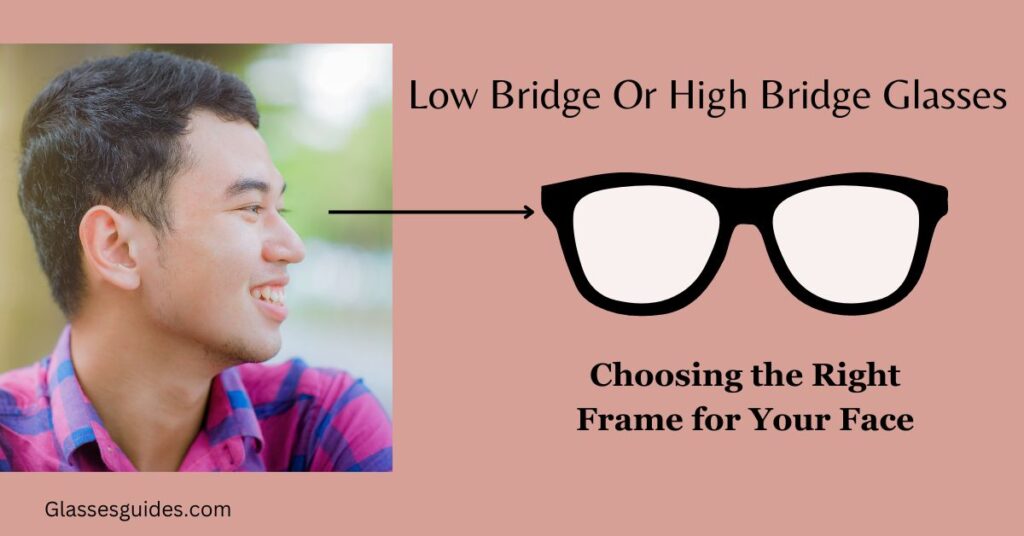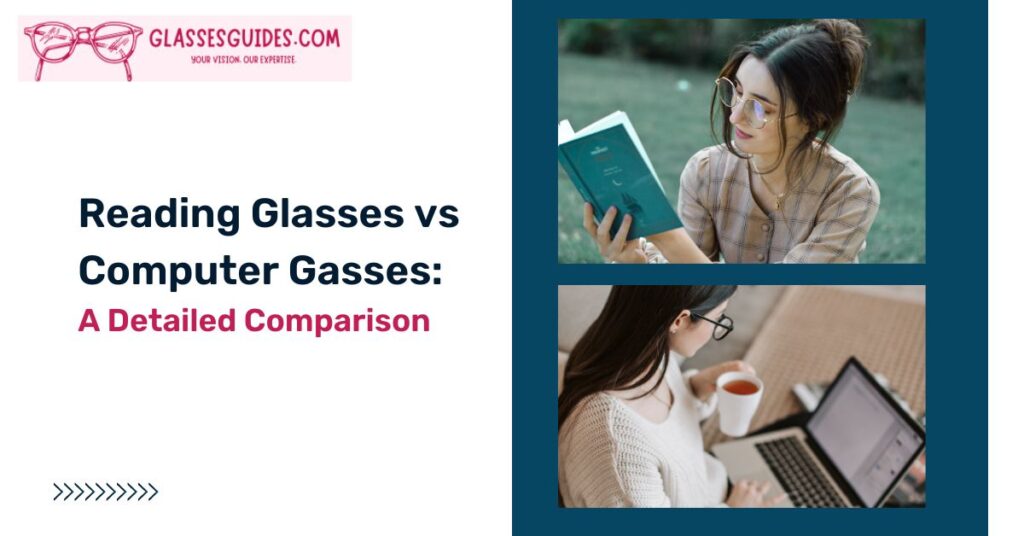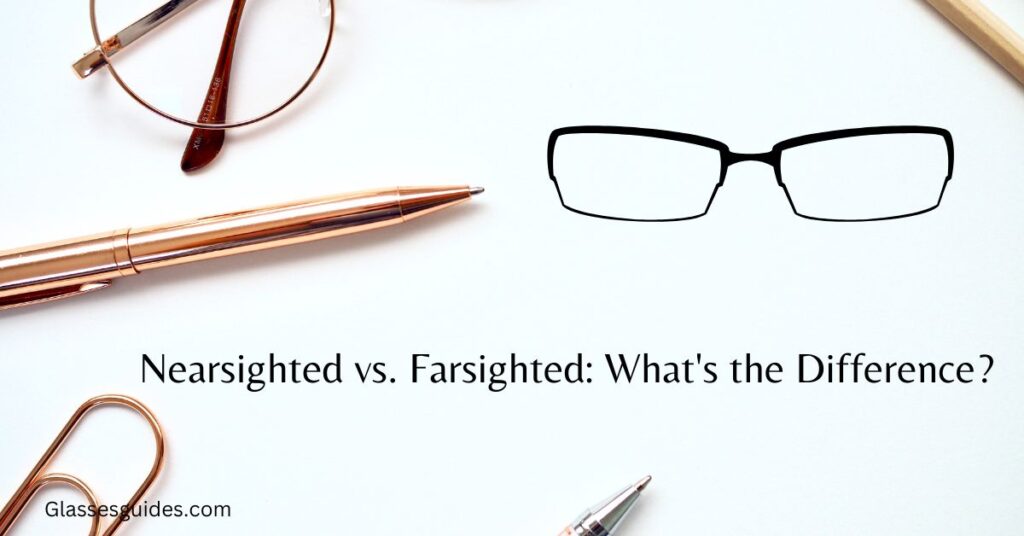When it comes to selecting the perfect pair of glasses, there’s more to consider than just style and prescription strength. One often-overlooked factor that significantly impacts comfort and fit is the bridge height of the glasses. The bridge is the part of the frame that rests on the nose, and its height can vary greatly between different styles of glasses.
Now, the confusion comes to mind whether will choose low bridge or high bridge glasses. do not worry we are here for you to help you understand the differences between low-bridge and high-bridge glasses and which type is best suited for your unique facial features. So Let’s learn how to choose the right frame for your face with confidence and comfort.
Table of Contents
Understanding Bridge Height for Glasses Frames

How well glasses frames fit on your face is determined by their bridge height. This crucial element is the bridge’s height above your cheekbones and nose. Knowing your bridge height is essential to choosing frames that will feel comfortable and secure all day long. It’s not only about style.
You won’t feel as many pressure points on your cheekbones or sliding down your nose when you wear glasses with the proper bridge height. This results in increased comfort and clarity of vision. Therefore, please take a moment to learn about your bridge height and its importance in selecting the ideal pair of glasses before entering into the world of frame types.
Features of Low Bridge Glasses
Low-bridge glasses are designed with a bridge that sits lower on the nose, closer to the cheeks. This configuration accommodates individuals with low nose bridges and higher cheekbones, providing a comfortable and secure fit.
Who should wear Low Bridge Glasses?
Low-bridge glasses are best suited for people who have low nose bridges and higher cheekbones. These individuals often struggle to find glasses that don’t slide down their noses or create uncomfortable pressure points on their cheeks.
Benefits of Low Bridge Glasses
- Secure fit: The bottom bridge keeps the glasses in place all day by preventing them from sliding down the nose.
- Comfortable wear: The closer proximity to the cheeks reduces pressure points, resulting in a more comfortable wearing experience.
- Improved stability: Low bridge spectacles provide more stability, particularly when engaging in motion-intensive activities like sports or exercise.
Precautions
- Loose fit for high bridges: Individuals with high-nose bridges may find low bridge glasses too loose or slippery, leading to frequent adjustments.
Further reading: What to do with old glasses?
Features of High Bridge Glasses
Compared to regular frames, high-bridge glasses have a bridge that is higher off the cheeks and nose. This shape offers a safe and comfortable fit without slipping or sliding, making it suitable for people with higher nose bridges and lower cheekbones.
Who should wear High Bridge Glasses?
People with lower cheekbones and high nose bridges look great in high-bridge spectacles. These people frequently have trouble finding spectacles that fit their faces properly and don’t slide down or hurt all the time.
Benefits of High Bridge Glasses
- Safe fit: The glasses stay in place all day because of the taller bridge, which keeps them from sliding down the nose.
- Comfortable wear: By lifting the frames away from the cheeks, high bridge glasses reduce the likelihood of pressure points, resulting in a more comfortable wearing experience.
Precautions
- High-bridge glasses can be extremely tight or unpleasant for people with low nose bridges, especially if the frames sit too high on the wearer’s face.
Finding the Height of Your Bridge
To figure out your bridge height and ensure a proper fit for your glasses, follow these simple steps:
- Look in the mirror and assess where the bridge of your glasses would sit relative to your pupils.
- Notice if there’s a noticeable gap between the bridge of your glasses and your nose or if the frames rest directly on your cheeks.
- Try on different glasses frames and pay attention to how they sit on your face. Note whether they feel too high, too low, or just right.
- Seek the opinion of an optometrist or glasses retailer for expert guidance on selecting frames that match your bridge height and facial features.
Other Things to Think About When Choosing a Frame:
- Face shape: Different frame styles complement various face shapes. Consider whether your face is round, square, oval, or heart-shaped, and choose frames that enhance your features.
- Lens size and shape: The size and shape of the lenses should suit your visual needs and aesthetic preferences. Larger lenses may provide a wider field of vision, while smaller lenses can offer a more streamlined look.
- Personal style preferences: Your glasses are an extension of your personal style. Whether you prefer classic, retro, or trendy frames, select a style that reflects your personality and makes you feel confident.
Final Thoughts
Knowing your distinct face traits and preferences is the first step in creating the ideal pair of glasses, which is a customized process. You can choose glasses that will improve your appearance in addition to offering the best comfort by considering aspects like bridge height, face shape, lens size, and personal style.
When choosing a frame, don’t forget to measure the height of your bridge and try on several different styles. Consult with eyewear professionals, such as optometrists or glasses shops, if you need advice. They can provide insightful advice and recommendations tailored to your specific needs.
FAQ: Low Bridge or High Bridge Glasses
Can I adjust the bridge of my glasses?
Yes, many glass frames allow for adjustments to the bridge to ensure a proper fit. Opticians or eyewear professionals can make these adjustments for you, ensuring that your glasses sit comfortably on your face.
Are there specific frame styles that work best for low or high-nose bridges?
Yes, certain frame styles complement various face shapes. For example, round frames can soften angular features, while rectangular frames can add definition to round faces. Opticians can guide frame styles that best suit your face shape.
What if I have both high nose bridges and higher cheekbones?
If you have both high nose bridges and higher cheekbones, you may find that glasses with a moderate bridge height offer the best fit and comfort. Experiment with different frame styles and seek advice from eyewear professionals to find the perfect match for your facial features.
Will wearing glasses with the wrong bridge height cause discomfort or affect my vision?
Yes, wearing glasses with the wrong bridge height can cause discomfort, such as pressure points on your nose or cheeks. It can also affect your vision if the lenses are not properly aligned with your pupils. It’s important to choose frames that fit your face correctly.
Are there any specific care tips for glasses with low or high bridges?
To ensure the longevity of your glasses, it’s important to clean them regularly with a microfiber cloth and lens cleaner. For glasses with low bridges, be mindful of any buildup of dirt or oil on the nose pads. For glasses with high bridges, ensure that the frames are not too tight, which can cause discomfort.



